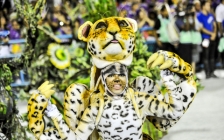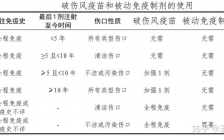巴西狂欢(狂欢巴西节)
Carnival is the most famous holiday in Brazil. It happens at the peak2 of summer and attracts thousands of people from all corners of the world.
Carnival festivities3 usually happen just before the Lent4 time, the 40 days period that comes before the Easter. Carnival is a 4-day celebration. It starts on Saturday, and ends on Tuesday. Dates vary every year. For four days, the joyful feelings spread over the streets and squares, from North to South, from East to West.
People put on their costumes5 and go out into the streets or to clubs. There are also the Samba6 schools, which make a parade showing their music and dances. Every year the parade tells a different story. Each city has one or more schools like this. The Samba Parade is the most colorful carnival event in Brazil.
According to historical researches, the first Brazilian carnival party happened in 1641. On that year, Rio de Janeiro7 's governor determined that a whole week should be dedicated to the celebration of the coronation8 of the new king of Portugal.
For Brazilians9, the carnival season is a time to forget or recall the past, to search for new romantic experiences. People can choose between parties or rest, and most people choose parties, day after day, night after night.
Carnival is the only national holiday that moves all the country and its different kinds of people and cultures together. It provides the ordinary people with an opportunity to protest against racial, class, and other inequalities10. During Carnival, the social structure is put upside down as people use costumes to take on11 different identities12: the poor are the royal, the wealthy are maids, adults are children, and men are women.
The name carnival comes from the Italian expression “carne vale”. Hundreds and hundreds of years ago, the followers of the Catholic13 religion in Italy started the tradition of holding a wild costume festival right before the first day of Lent. Because Catholics are not supposed to eat meat during Lent, they called their festival, carne vale—“meat worth it”, which means the meat fast14 and the Lent Time worth the feast of food and music.
As time passed, carnivals in Italy became quite famous; and in fact the practice spread to France, Spain, and all the Catholic countries in Europe. Then, in many parts of the world, where Catholic Europeans set up colonies and entered into the slave trade, carnival took root. Brazil, once a Portuguese colony, is now famous for its carnival.
Carnival traditions also borrow from the African tradition of putting together natural objects (bones, grasses, shells) to create a mask or costume—with each object or combination of objects representing a certain idea or spiritual force. Besides, samba—the music of carnival—originated15 from the ancient rhythm16 the African slaves brought to Brazil.
Today, Rio de Janeiro has the biggest and best known pre-Lenten carnival in the world. In February, the former capital of the Republic turns itself into a land of magic and beauty. Splendid balls and street celebrations are held everywhere inside the city. Crowds gather to watch or take part in the wonderful samba school parades.
The Samba Parade began in the 1930's. By the 1950's, the samba school parades became very successful. They turned into profitable products and entered the focus of politicians and businessmen. The coming of TV helped to establish a new relationship between samba and society.
Today the event is broadcast to dozens of countries and all Brazilian states. Many people think of it as the greatest show on earth.
狂欢节是巴西最著名的节日,每年盛夏时节,巴西狂欢节都要吸引成千上万的游客从世界各地来到这里。
通常,复活节前为期四十天的四旬斋即将到来时,巴西狂欢节的欢庆活动就开始了。狂欢节为期四天,始于四旬斋前一周的周六,为期四天,结束于周二。每年的具体起迄日期不定。欢庆活动期间,欢乐的气氛弥漫着城市从北到南、从东到西的各条街道、各个广场。
人们穿上盛装,走上大街,走进俱乐部。桑巴舞学校也在节日里举行盛装游行,展示音乐和舞蹈。每年的桑巴舞盛装游行都有不同的主题。每个城市都有一个甚至多个这样的舞蹈学校。在巴西,桑巴舞盛装游行是狂欢节期间最激动人心的盛事。
据历史考证,巴西历史上最早的狂欢节要追溯到1641年。那一年,当时的里约热内卢总督决定用整整一周的庆祝活动来纪念葡萄牙新国王登基。
对巴西人而言,狂欢节让人忘却或唤回逝去的时光,追寻新的浪漫经历。人们可以选择参加盛会或休息放松,不过大多数人选择了参加日夜不停的盛会。
狂欢节是巴西惟一的一个能将不同文化背景的社会各阶层人士团结在一起的全国性节日。普通民众有机会借此盛会抗议种族、等级及其他各种不平等现象。狂欢节期间,人们穿上各式服装,将自己打扮成各种身分的人:穷人扮成贵族,富人假扮仆人,成人装作孩子,男人假冒女人。在尽情的狂欢中,一切似乎都被颠倒了过来。
狂欢节一词来源于意大利语“CARNE VALE”。很久以前,意大利的天主教徒们就开始在四旬斋开始前举行盛装狂欢。由于四旬斋期间按教规天主教徒不应吃肉,因此他们将此狂欢活动称作CARNE VALE,意即由于四旬斋期间禁食肉类,因此应该先载歌载舞、豪饮狂欢一番。
随着时间的推移,狂欢节在意大利已相当出名。事实上这种活动后来渐渐由意大利传播到了法国、西班牙和欧洲的所有天主教国家。尔后,伴随着天主教的欧洲国家在世界各地建立起殖民地,并开始向殖民地贩运奴隶,狂欢节也就随之在这些地方生根了。巴西曾经是葡萄牙的殖民地,现在则因其狂欢节而闻名于世。
此外,巴西狂欢节也借鉴了非洲的一些文化传统,将自然物件(如骨片、草、贝壳)串在一起,做成假面具或服饰。每件物品或物品组合代表某种特定理念或神力。不仅如此,被称作“狂欢节音乐”的桑巴舞,也来源于非洲黑奴带到巴西的古老音乐节奏。
现在,四旬斋前最盛大、最著名的狂欢节活动是在巴西的里约热内卢举行的。每年到了二月,这个巴西共和国的前首都就成为了一片充满魔力和美丽的地方。市内到处都是华丽的舞会和街头节庆活动。人们拥挤着观看或参与美妙的桑巴舞盛装游行。
桑巴舞盛装游行始于20世纪30年代。到了50年代,桑巴舞盛装游行已非常成功,逐渐成为一项有利可图的事件,引起了政客和商人们的关注。电视的出现则使桑巴和社会之间形成了一种新型的关系。
如今,里约热内卢的狂欢节活动向巴西各州以及世界几十个国家进行转播。很多人都认为它是世上最精彩的演出。
=========================
1. carnival n. 狂欢节,嘉年华会
2. peak n. 尖顶;最高点
3. festivity n. 欢宴;节庆活动
4. Lent [lent] n. (基督教的)四旬斋(复活节前为期40天的斋戒和忏悔)
5. costume n. 服装;戏装
6. samba n. 桑巴舞(曲)(源于巴西)
7. Rio de Janeiro 里约热内卢(巴西城市名)
8. coronation n. 加冕礼
9. Brazilian n. 巴西人
10. inequality n. 不平等
11. take on 呈现(某种样子);装成某事物
12. identity n. 身份
13. Catholic adj. 天主教的
14. fast n. 斋戒(期);禁食(期)
15. originate v. 发端;始自
16. rhythm n. (音乐)节奏







文章评论(0)